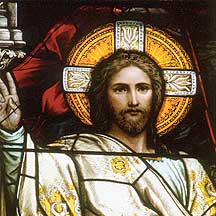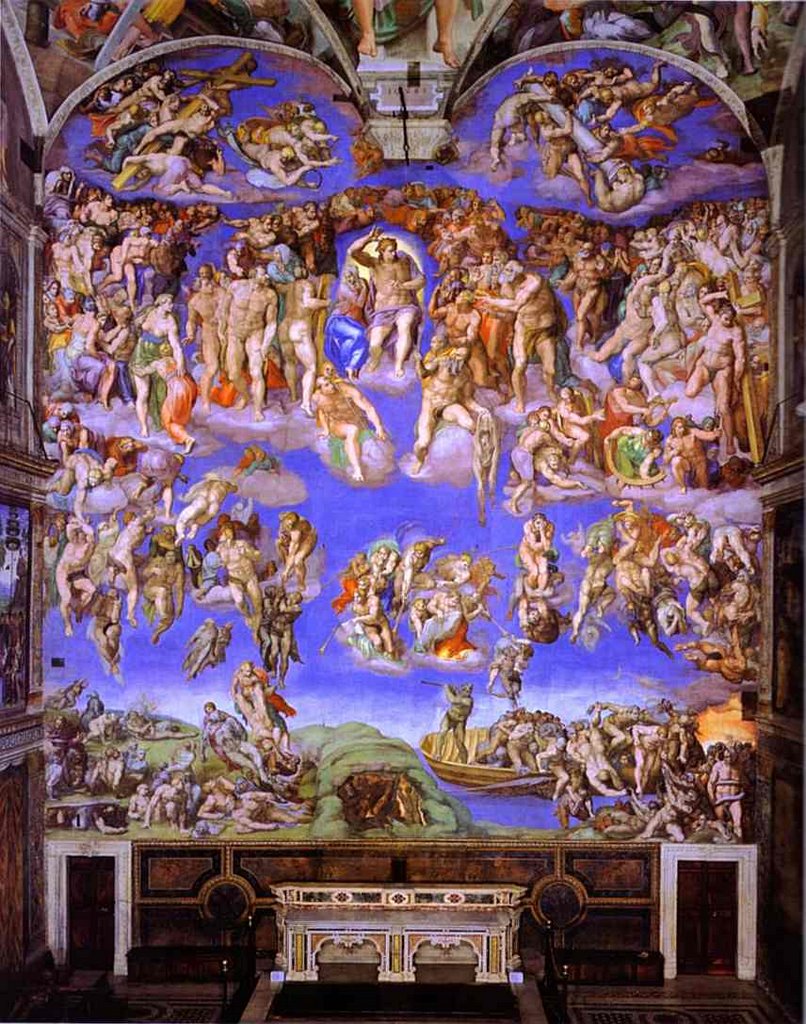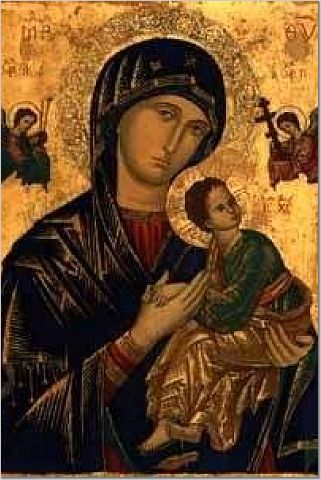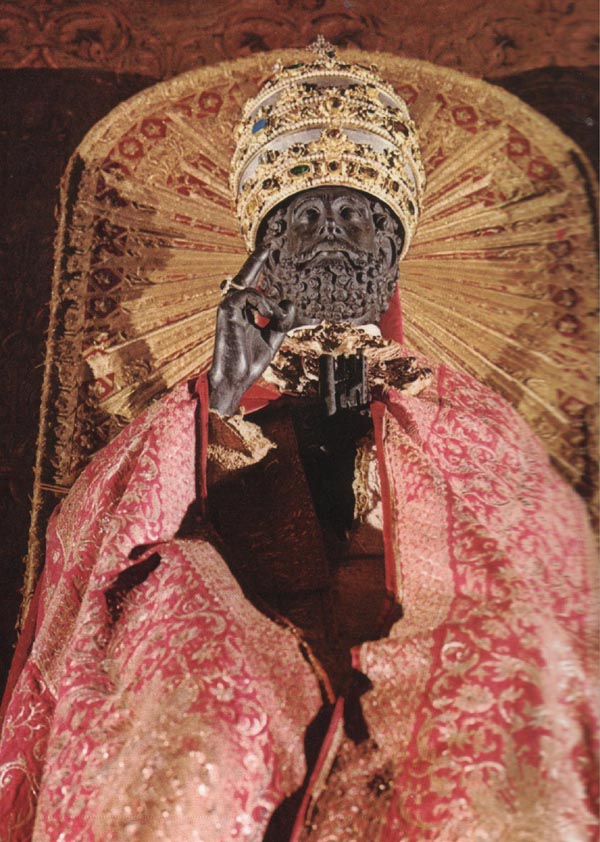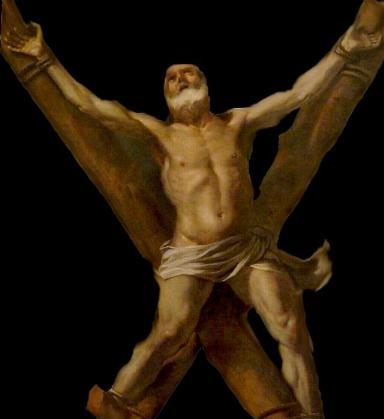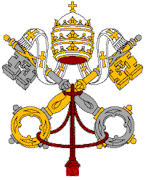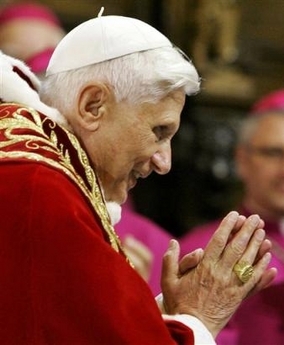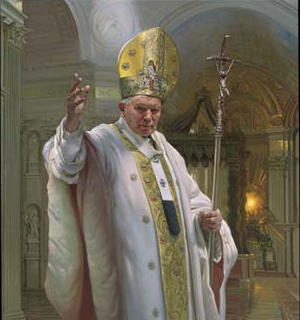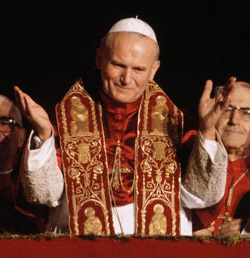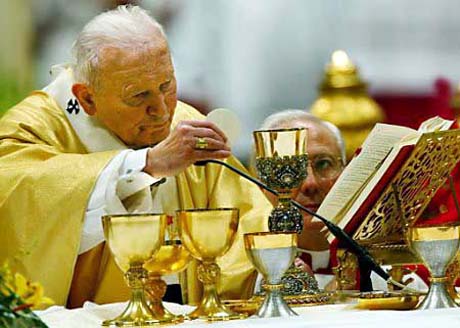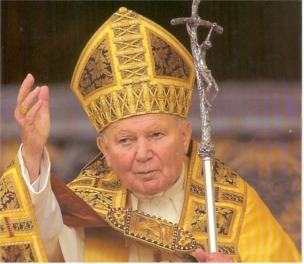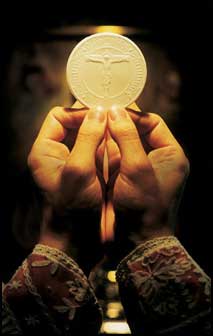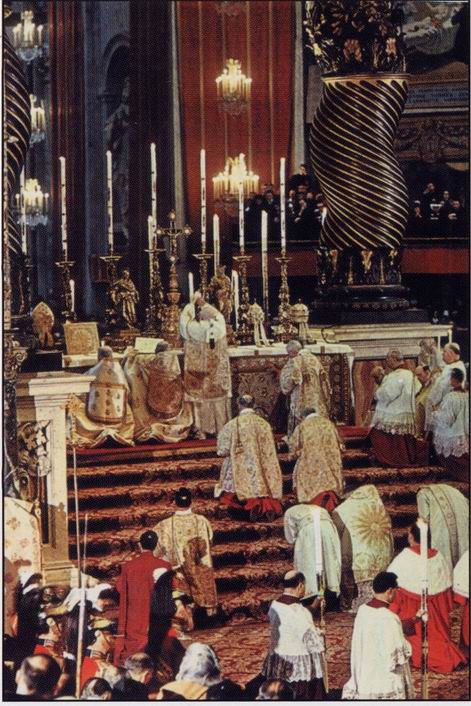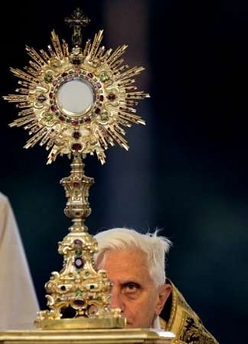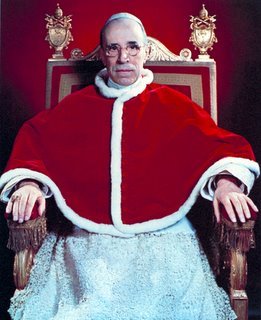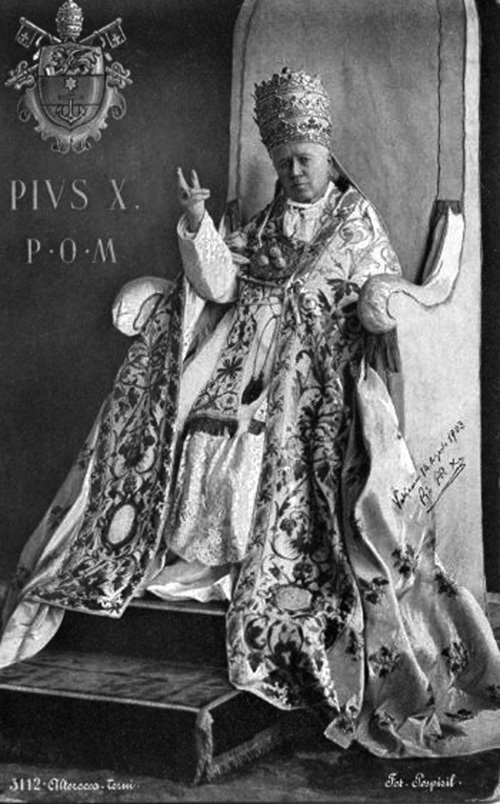Archbishop opens new RM3mil building
IT was a moment parishioners of the Church of the Sacred Heart of Jesus at Jalan Peel, Kuala Lumpur, had waited for as the opening of the impressive five-storey building, adjacent to the church was celebrated with a thanksgiving mass, a hearty meal and performances on Saturday.
The driving force behind the project was parish priest Rev Fr Anthony Thomas, who was described by Kuala Lumpur Archbishop Datuk Murphy Pakiam as the builder of community centres.
“Rev Thomas has built community centres in Sentul, Seremban and now here at the Sacred Heart church.
He rises to the call to build community centres,” the archbishop said before unveiling the plaque, marking the opening of the Dominic Vendargon Building.
Also present was Penang Bishop Rev Anthony Selvanayagam.

The pat on the back for Rev Thomas was well deserved as the priest also generously contributed his life savings to the building fund.
The building project committee chairman Peter A. Das said the fund raising project was initiated six-years ago.
“It cost about RM3mil and houses a community hall, 15 classrooms, kitchen, AV room, piano room and store rooms, an open space for events on the top floor, the church’s office and the parish priest’s residence,” said Das.
He said parishioners were encouraged to donate towards the cause, while breakfast sales, a jogathon, jumble sales, open and family days as well as a fund raising dinner were organised to beef up the coffers.

“There were pledges by parishioners and also donations from well wishers,” he said.
Das said the hall could be used for events and dinners and when not in use for functions, would be utilised as a badminton court.
“The classrooms will cater to Sunday school classes and Bible classes for Form Four and Five students, meetings for the RCIA groups, Legion of Mary and St Vincent De Paul,” he said.
Das said the church hoped to re-start its kindergarten, which used to serve the community.
“Kindergarten classes took place at the one-storey building but had to make way for the construction of the new building,” he said.
Friday, June 29, 2007
KL Archbishop opens new parish centre
Wednesday, June 27, 2007
The Vietnamese Martyrs
The Vietnamese Martyrs also known as the Martyrs of Tonkin, Martyrs of Annam or Martyrs of IndoChina, and were collectively canonized by Pope John Paul II. Their feast day is 24 November although several of these saints have another memorial day as they were beatified and on the calendar prior to the canonization of the group.
It is not known precisely how many Catholics died for their faith between 1516 when the first Portuguese missionaries arrived in what is now Vietnam and the twentieth century (about 130,000 to 300,000 Vietnamese martyrs were killed); however, Pope John Paul II decided to canonize those whose names are known and unknown, giving them a single feast day. Principally, the Vietnamese Martyrs fall into several groupings, those of the Portuguese missionary era (16th Century), the Dominican and Jesuit missionary era of the (17th Century), the politically inspired persecutions of the (19th Century), and the Communist purges of the 20th Century. A representative sample of only 117 martyrs -including 96 Vietnamese, 11 Spanish Dominicans, and 10 French members of the Paris Society for Foreign Missions(Missions Etrangères de Paris) (MEP)— were beatified on four separate occasions: 64 by Pope Leo XIII on May 27, 1900, 8 by Pope Pius X on May 20, 1906, 20 by Pope Pius X on May 2, 1909, 25 by Pope Pius XII on April 29, 1951. All these 117 Vietnamese Martyrs were canonized on June 19, 1988 and a young Vietnamese Martyr, Andrew Phú Yên was beatified in March, 2000 by Pope John Paul II.
 The tortures these individuals underwent were among the worst in the history of Christian martyrdom. The means included cutting off limbs joint by joint, ripping living bodies with red hot tongs, and use of drugs to enslave the minds of the victims. Christians at the time were branded on the face with the words "ta dao"(false religion) and families and villages which subscribed to Christianity were obliterated.
The tortures these individuals underwent were among the worst in the history of Christian martyrdom. The means included cutting off limbs joint by joint, ripping living bodies with red hot tongs, and use of drugs to enslave the minds of the victims. Christians at the time were branded on the face with the words "ta dao"(false religion) and families and villages which subscribed to Christianity were obliterated.
Jesuit missionary Alexandre De Rhodes in the 17-th century perfected a written system of the Vietnamese language largely using the Roman alphabet with added diacritic markings, based on the work of earlier Portuguese missionaries. This sytem continues to be used today, and is called Quốc Ngữ (literally "national language").
 Later centuries (mainly, 19-th) had long periods of turbulence for the Catholic Church in Vietnam, including persecution of clergy and ordinary believers by Vietnamese authorities. Such events were described in Catholic Encyclopedia as the "Great Massacres", demonstrated the fierce determination of the Annamite rulers to destroy every vestige of the Christian faith. In Eastern Cochin China the martyrs included 15 priests (7 native), 60 catechists, 270 nuns, 24,000 Christians (out of 41, 234); all the charitable institutions and ecclesiastical buildings of the mission—including the episcopal curia, churches, presbyteries, 2 seminaries, a printing establishment, 17 orphanages, 10 convents, and 225 chapels — were destroyed. In Southern Cochin China 10 native priests and 8585 Christians were massacred in the Quang Tri Province alone—the two remaining provinces supplied hundreds of martyrs; two-thirds of the churches, presbyteries, etc. of the mission were pillaged and burned. In the Mission of Southern Tong-king, 163 churches were burned; 4799 Catholics were executed, while 1181 died of hunger and misery. These figures apply only to the year 1885. In 1883-1884 eight French missionaries, one native priest, 63 catechists and 400 Christians were massacred in Western Tong-king, while 10,000 Catholics only saved themselves by flight. The carnage extended even to the remote forests of Laos, where seven missionaries, several native priests, and thousands of Catholics were killed.
Later centuries (mainly, 19-th) had long periods of turbulence for the Catholic Church in Vietnam, including persecution of clergy and ordinary believers by Vietnamese authorities. Such events were described in Catholic Encyclopedia as the "Great Massacres", demonstrated the fierce determination of the Annamite rulers to destroy every vestige of the Christian faith. In Eastern Cochin China the martyrs included 15 priests (7 native), 60 catechists, 270 nuns, 24,000 Christians (out of 41, 234); all the charitable institutions and ecclesiastical buildings of the mission—including the episcopal curia, churches, presbyteries, 2 seminaries, a printing establishment, 17 orphanages, 10 convents, and 225 chapels — were destroyed. In Southern Cochin China 10 native priests and 8585 Christians were massacred in the Quang Tri Province alone—the two remaining provinces supplied hundreds of martyrs; two-thirds of the churches, presbyteries, etc. of the mission were pillaged and burned. In the Mission of Southern Tong-king, 163 churches were burned; 4799 Catholics were executed, while 1181 died of hunger and misery. These figures apply only to the year 1885. In 1883-1884 eight French missionaries, one native priest, 63 catechists and 400 Christians were massacred in Western Tong-king, while 10,000 Catholics only saved themselves by flight. The carnage extended even to the remote forests of Laos, where seven missionaries, several native priests, and thousands of Catholics were killed.
 All Vietnamese Catholics who had died for their faith from 1533 to the present day were canonized in 1988 by Pope John Paul II as Vietnamese Martyrs. Those who were known, were named and there are 117 of them who died under persecutions of Christians that in fact lasted from 1625 to 1886 and costed about 130.000 lives. The group consists of martyrs in the three Vietnamese kingdoms of Tonkin, Annam and Cochin China. Among the 117 were 96 Vietnamese and 21 foreign missionaries. Of the Vietnamese group were 37 priests and 59 lay people, among whom were catechists and tertiaries. One of them was a woman, mother of six. Of the missionaries was 11 Spaniards; 6 bishops and 5 priests, all Dominicans, and 10 were French; 2 bishops and 8 priests from Société des Missions Etrangères in Paris. 76 were beheaded, 21 suffocated, 6 burnt alive, 5 mutilated and 9 died in prison as a result of torture. A detailed description of their sufferings is found in a letter written by Paul Le Bao Tinh to the seminary of Ke Vinh in 1843. Further beatifications are expected.
All Vietnamese Catholics who had died for their faith from 1533 to the present day were canonized in 1988 by Pope John Paul II as Vietnamese Martyrs. Those who were known, were named and there are 117 of them who died under persecutions of Christians that in fact lasted from 1625 to 1886 and costed about 130.000 lives. The group consists of martyrs in the three Vietnamese kingdoms of Tonkin, Annam and Cochin China. Among the 117 were 96 Vietnamese and 21 foreign missionaries. Of the Vietnamese group were 37 priests and 59 lay people, among whom were catechists and tertiaries. One of them was a woman, mother of six. Of the missionaries was 11 Spaniards; 6 bishops and 5 priests, all Dominicans, and 10 were French; 2 bishops and 8 priests from Société des Missions Etrangères in Paris. 76 were beheaded, 21 suffocated, 6 burnt alive, 5 mutilated and 9 died in prison as a result of torture. A detailed description of their sufferings is found in a letter written by Paul Le Bao Tinh to the seminary of Ke Vinh in 1843. Further beatifications are expected. The traditional Vietnamese religion is Buddhism, together with elements of Taoism, Confucianism and local ancestors' cult. The Catholic Church came with missionaries at the beginning of the 16th century. It was seen as a foreign element and subject for fanatical persecution. During the first 200 years of Christianity in these parts it is believed that about 100,000 were martyred, but of most of these all historical record has been lost. The two first apostolic vicariates were established in 1659.
The earliest martyrs of whom there is substantial documentation are the Spanish Dominicans Francisco Gil de Federich and Alonzo Lenziana, who came to the country about 1580. Gil directed during nine years in prison a fruitful apostolate, while Lenziana, a fugitive for thirteen years, ministered faithfully but furtively to the native Christians. In 1773 two more Dominicans were beheaded, Hyacinth Casteneda, a Spaniard who had evangelised in the Philippines and China for several years before being deported to Vietnam, where he was imprisoned for three years. There he was joined by Vincent Liêm, the first Indo-Chinese Dominican to be martyred, who had ministered to his countrymen for fourteen years before he was beheaded. In 1798 the first Vietnamese diocesan priests, John Dat and Emmanuel Triêu, also suffered martyrdom.
During the first twenty years of the 19th century Christianity made steady progress, but this was dramatically interrupted by the persecutions under the Annamite emperors Minh-Mang (1820-40) and Tu Dúc (1847-83). From 1832 Minh-Mang excluded all foreign missionaries and ordered Vietnamese Christians to renounce Christianity by trampling on the crucifix. meanwhile churches were to be destroyed and teaching Christianity forbidden. Very many suffered death or extreme hardship.
Bishops, hardly 30 years old, got a piece of bamboo as pastoral staff and mitre of paper; older priests were exposed in cages for public mocking, which led to conversations until the end, and poor peasant were murdered because they refused to trample on an image of Christ. The persecutions are compared with those of ancient Roman emperors.
The Spanish Dominican bishops Ignatius Delgado and Dominic Henarez, each of whom had worked for 50 years there, were again arrested. Delgado (76) died of hunger, thirst, and exposure in a cage before he could be beheaded. Henarez and his Annamite catechist Francis Chiêu were both executed. Other Vietnamese priests who were martyred included Peter Tuân, Bernard Duê and James Nam. A doctor, Joseph Canh, and a tailor, Thomas Dê, suffered the same fate.
Some of the victims seem to have been induced by drugs to make temporary retractions: others endured fearsome tortures, including cutting off the limbs joint by joint, A group of French missionaries, including Joseph Marchand and Jean-Charles Cornay, also suffered: the former, who was captured at Saigon, died like St. Bartholomew while the flesh was torn from his body with red-hot tongs; the latter who was set up by weapons being buried in the plot of land he was cultivated, was imprisoned in a series of cages: being young and endowed with a fine voice, was obliged to sing to his captors. Eventually on 20 September 1837 the sentence of the supreme tribunal «that he is to be hewn in pieces and that his head, after being exposed for three days, is to be thrown into the river» was accomplished.
A Vietnamese diocesan priest who suffered martyrdom in this persecution is St. Andrew Dung-Lac, who is honoured by being the representative of the 117 martyrs in the Roman Calendar. His name was originally Dung An Trân, and he was born about 1795 in a poor and pagan family in Bac-Ninh in North Vietnam. When he was twelve the family had to move to Hà-Nôi (Hanoi) where his parents could find work. There he met a catechist and got food and shelter from him. He also got education in Christian faith for three years, and was baptised in Vinh-Tri with the Christian name Andrew (Andrew Dung). After learning Chinese and Latin he became a catechist, and thereafter taught catechises in the country. He was chosen to study theology, and on 15 March 1823 he was ordained priest. As parish priest in Ke-Dâm he was tireless in his preaching. He often fasted and lived a simple and moral life, he was a good example for the people, and many were baptised. In 1835 he was imprisoned under emperor Minh-Mang's persecutions (he was called Vietnam's emperor Nero), but his freedom was purchased by donations from members of the congregation he served. To avoid persecutions he changed his name to Lac (Andrew Lac) and moved to another prefecture to continue his work. But on 10 November 1839 he was again arrested, this time with Peter Thi, another Vietnamese priest whom he was visiting so that he might go to confession.
Once again Andrew was liberated, along with St. Peter Thi, in exchange for money. Their freedom was brief. They were soon re-arrested and taken to Hanoi, where both suffered a dreadful torture. Finally they both were beheaded 21 December 1839. Andrew was beatified in the first group on 27 May 1900.
Persecutions were revived in 1847 when Christians were suspected of complicity in rebellion, while French and Spanish efforts to protect their nationals caused a xenophobic and anti-Christian ferocity. Once more foreign missionaries and native clergy and laity suffered death for Christianity. The most famous include St. Théophane Venard of the Paris Mission. He was a schoolmaster's son, born at Saint-Loup-sur-Thouet (Deux-Sèvres) in 1829, he joined the Society of Foreign Missions of Paris as a young man, transferring to it from the seminary of Poitiers diocese. In 1852 he was ordained priest and in 1854 he was sent to Tonkin in a time of severe persecutions. Expelled from Nam-Dinh in 1856, he went to Hanoi, where however the renewed persecutions obliged him to hide in caves and sampans. At last he was arrested, placed in a bamboo cage, and ultimately in 1861 beheaded for the Christian faith. His letters and his example inspired the young St. Theresa of Lisieux to volunteer for the Carmelite nunnery at Hanoi. But she got tuberculosis and could not go. In 1865 Vénard's body was translated to his Congregation's church in Paris, but his head remains in Vietnam. With 19 other martyrs from this area he was beatified in 1909.
Others to suffer in the same persecution were Augustus Schoffler from Lorraine, and John Louis Bonnard, who wrote a fine letter of farewell to his family before being executed on 1 May 1852. Also should be mentioned Stephen Cuénot, a bishop who had established three vicariates during 25 years' episcopate, was hidden by a pagan during persecution until he had to emerge for water, and died of dysentery just before the edict for his execution arrived.
Christians were marked on their faces with the words ta dao (=false religion); husbands were separated from their wives, and children from their parents. Christian villages were destroyed and their possessions distributed. Among those who suffered death in this persecution were Laurence Huong, Paul Lôc and John Hoan (priests), Andrew Nam-Thuông (catechist), Michael Hy-Dinh-Hô (official) and Agnes Thành Thi Lê, mother of 6 children, who carried letters from the confessors in prison.
In the persecutions under emperor Tu-Dúc (1857-62) two more Spanish bishops were killed and a Vietnamese judge, Dominic Kham, as well as two fishermen, Peter Thuan and Dominic Toái, who along with Peter Da were burnt alive in a bamboo hut.
Others who were mentioned by name in the canonisation mass were Thomas Tran Van Tien, a seminarian, Emmanuel Le Van Phoung, father of a family, the Dominican bishops Jerome Hermosilla and Valentin Berrio Ochoa.
In June 1862 a treaty between France and Amman guaranteed religious freedom. This marked the beginning of the end of the persecutions, some of whose features recall the sufferings of the martyrs in the early ages of Christianity.
The 117 martyrs were beatified in four groups, the first of them on 27 May 1900 (Pope Leo XIII), the second (all Dominicans) on 20 May 1906, a third on 2 May 1909 (both by Pope Pius X) and the last (including two Spanish bishops) on 29 April 1951 (Pope Pius XII). They were canonised in Rome on 19 June 1988 by Pope John Paul II.
At the canonisation in Rome was no delegation from the communist regime in Vietnam. But 8000 Vietnamese in exile participated as representatives for their catholic countrymen in Vietnam, who not were allowed to leave the country. In addition came pilgrims especially from Spain, France and the Philippines, who have missioned in Vietnam for 300 years.
On 24 November 1960 Pope John XXIII established the catholic hierarchy in Vietnam. It included (1989) 1 cardinal, 35 bishops and 25 dioceses with about 6 millions Catholics, i.e. about 10 % of the population. These are the fruits from the martyrs' blood.
The group is also called Martyrs of Vietnam, of Indo-China or of Tonkin. Feasts: Formerly 2 February (the 1909 group), 11 July and 6 November. Now together on 24 November.
In College General, the martyrs are memorialized as St. Phillip Minh and Companions. St. Phillip Minh was born in 1815 at Caimong, West Cochin-China (Vietnam). He joined the Society for Foreign Missions of Paris and was ordained a priest with the purpose of working for the Church in Vietnam. Seized by anti-Catholic forces, he was beheaded in 1853. He was beatified in 1900 and canonized by Pope John Paul II in 1988 and his memorial is celebrated on the 3rd of July.I'm leaving you with this letter, written by Paul Le-Bao-Tinh, a Vietnamese seminarian, written in 1843, shortly before his martyrdom:
- I, Paul, chained for the name of Christ, wish to tell you the tribulations in which I am immersed every day, so that you, inflamed with love for God, may also lift up your praise to God, 'for his mercy endures forever'. This prison is truly the image of the eternal Hell: to the cruelest tortures of all types, such as fetters, iron chains and bonds, are added hate, vindictiveness, calumny, indecent words, interrogations, bad acts, unjust oaths, curses and finally difficulties and sorrow. But God, who once freed the three boys from the path of the flames, is always with me and has freed me from these tribulations and converted them into sweetness, 'for his mercy endures forever…
- Assist me with your prayers so that I may struggle according to the law, and indeed 'fight the good fight' and that I may be worthy to fight until the end, finishing my course happily; if we do not see each other again in this life, in the future age, nonetheless, this will be our joy, when standing before the throne of the spotless Lamb, with one voice we sing his praises, exulting in the joy of eternal victory. Amen.
I'm going to post more about the relics of the martyrs kept in the Chapel of the seminary and their significance, so look out for that one.
Sources:
Katolsk
Wikipedia
Tuesday, June 26, 2007
Motu Proprio released!
MOTU PROPRIO CONCERNING ELECTION OF THE SUPREME PONTIFFI feel cheated. Well, there's always next week...
VATICAN CITY, JUN 26, 2007 (VIS) - Made public today was a "Motu Proprio," written in Latin, with which the Holy Father Benedict XVI restores the traditional norm concerning the majority required for the election of the Supreme Pontiff. According to this norm, in order for the election of a new Pope to be considered valid it is always necessary to reach a majority of two thirds of the cardinals present.
With this document, Benedict XVI substitutes the norm established by John Paul II who, in his 1996 Apostolic Constitution "Universi Dominici gregis," laid down that the valid quorum for electing a new Pope was initially two thirds but that, after three days of voting without an election, there would be a day dedicated to reflection and prayer, without voting. Thereafter, voting would resume for seven additional ballots, another pause for reflection, another seven ballots, another pause and yet another seven ballots. After which an absolute majority was to decide how to proceed, either for a vote by absolute majority or with balloting between two candidates. This was to happen only in the event that the cardinals arrived at the 33rd or 34th ballot without a positive result.
MP/ELECTION SUPREME PONTIFF/... VIS 070626 (210)
Friday, June 22, 2007
Out of time...
 I would like to apologize for the sloppy updating....been kinda tied up with some projects, including some good news about our choir which I would like to share soon, but not yet. So, in the meantime, I would like to relate this to you.
I would like to apologize for the sloppy updating....been kinda tied up with some projects, including some good news about our choir which I would like to share soon, but not yet. So, in the meantime, I would like to relate this to you.I was out for a drive in a car with a Capuchin priest friend, sometime rather late in the night, when the car were were in crashed into another car. Stunned, we exited the vehicle, only to discover that the other driver was a Jesuit priest.
 "It was my fault," each of them insisted -- as is only right and proper with religious men. The Jesuit in his concern for the Capuchin priest said, "You look badly shaken up. You could probably use a good stiff drink right now to calm down." So he produced a flask. The Capuchin drank and said, "Thank you, Father; I feel much better now."
"It was my fault," each of them insisted -- as is only right and proper with religious men. The Jesuit in his concern for the Capuchin priest said, "You look badly shaken up. You could probably use a good stiff drink right now to calm down." So he produced a flask. The Capuchin drank and said, "Thank you, Father; I feel much better now."The Jesuit said, "You still look a little rattled, have another drink." And the Capuchin took another chug. "One more," said the Jesuit," and you'll be feeling fine again." The Capuchin, after taking a drink, said, "But Father, you're probably shaken up too. Why don't you have a drink." "I will," the Jesuit replied, "but I think I'll wait until after the police have come."
Haha....
Wednesday, June 20, 2007
Feast of the Vietnamese Martyrs 07
College General, Penang is one of the few seminaries in the world which possesses relics of martyrs who were once either students or professors who have borne the ultimate witness to Christ, in blood. Its rich tradition of heroic men who have achieved martyrdom is a testimony to all Christians, especially those who have walked along its corridors as well as those who will do so in the future. It is hoped that the faith of these martyrs will inspire and motivate us to emulate their love of Christ.
The men from College General who have endured suffering and undergone death were:
Two French Priests of the Paris Foreign Mission Society (MEP), who were professors of College, martyred and canonised in Korea:-
1) Bishop Laurent Imbert
2) Father Jacques Chastan (my former parish priest)
Five Vietnamese Priests, seminarians of College in the early 1800s, martyred in their home country and canonised in Rome in 1988:-
1) Father Philip Minh
2) Father Peter Qui
3) Father Paul Loc
4) Father John Hoan
5) Father Peter Luu
About fifty other martyrs, mostly Vietnamese, martyred in the 19th century. Among them was Fr Paul Chau, whose crucifix was sent to College General according to his wishes.
Yesterday, the College General celebrated the memorial of the Vietnamese martyrs, St. Phillip Minh and Companions, with a special Mass. Continuing it's tradition, an alumni ordained the year before was invited to preside over the celebrations and Fr. Francis Andrew, whose ordination I attended last year was chosen.
Before Mass began, the museum where many interesting artefacts such as a copy of the Gutenberg Bible, the first book ever printed is displayed. The chapel was packed, despite the rainy weather. I was glad to have a place near the front although it was a tight squeeze.





The 'good' chalice was brought out for the Mass.



Fr. Decroix, MEP and Fr. Paul Cheong OFM Cap were concelebrating as well.

Mark, going up for Holy Communion.







Here's a view of the spread that was laid before us. Wow.. happy days.


This old crucifix hangs in the refectory.

The Last Supper.

An old Marian statue.

Monday, June 18, 2007
Rant
This post follows the post on US President Bush's visit to Pope Benedict at the Vatican. While he was in the Italian capital these 'people' were out in the street 'demonstrating'. I have nothing but utter and complete scorn for these wussies. Yes, that's right, wussies, the plural form of wuss which is defined by the Urban Dictionary as:
A person who is physically weak and ineffectual. Often a male person with low courage factor.Sure looks like these people fit the description to me. Why, you say? Well, firstly, a person with courage and conviction in the righteousness of what he is doing would have the testicular fortitude to show his face and not hide behind a mask likes these wusses here.
A person of dual sissiness. This is actually a combination word. The person this word describes is not only a wuss, he is part wimp and part puss.
 Wuss. Textbook example. A hooligan in action. What bravery, fighting against the big bad police who can't shoot you back. Wow. Try this in Iraq against Saddam's government and see what happens.
Wuss. Textbook example. A hooligan in action. What bravery, fighting against the big bad police who can't shoot you back. Wow. Try this in Iraq against Saddam's government and see what happens.I find that this is a most apt (read printable) description of these 'people' who demonstrate in the street about something so completely out of their ken and experience. They're nothing more than thugs and remind me about the poor misguided Palestinian child and teen terrorists-in-training taking part in the intifada and hurling stones and missiles of all kinds against the Israeli police who are supposed (according to the wussies who want 'justice') to do nothing while they are being pelted and assaulted.
If I had my wish, the police would open fire with rubber bullets. If the 'protesters' get hurt, then too bad. Who asked them to be out in the streets hurling rocks anyway. They deserve it if you ask me.
Take for example this brave wannabe hero of justice here. Look at his/her McLenin scarf.
 Well, the scarf just makes me want to barf. It is a mockery of all the suffering that the Soviet people went through under Lenin and his 'revolution'. I really wish these people really lived under Lenin. And then see if they would equate the almost unlimited freedom that they now enjoy with the repression of Lenin's Russia. Ungrateful idiots.
Well, the scarf just makes me want to barf. It is a mockery of all the suffering that the Soviet people went through under Lenin and his 'revolution'. I really wish these people really lived under Lenin. And then see if they would equate the almost unlimited freedom that they now enjoy with the repression of Lenin's Russia. Ungrateful idiots. Bloody hooligans, that's what they are. Bloody spoilt brats. Have some common decency and show your face you poor witless, brainless excuse of a human being. Nothing to watch on TV? Well, lets go and throw stones and the police to show how oppressed we are. Useless.
Bloody hooligans, that's what they are. Bloody spoilt brats. Have some common decency and show your face you poor witless, brainless excuse of a human being. Nothing to watch on TV? Well, lets go and throw stones and the police to show how oppressed we are. Useless. These people are nothing but terrorists, slithering along with their identities hidden, playing eco warrior and raising a ruckus against the US soldiers, the very ones who are dying defending their freedom. Shoot them. Then they'll sober up.
These people are nothing but terrorists, slithering along with their identities hidden, playing eco warrior and raising a ruckus against the US soldiers, the very ones who are dying defending their freedom. Shoot them. Then they'll sober up. And these little armchair terrorists (who go back home to their middle class jobs and families and sit in their comfy couches sipping beer after a hard day of throwing rocks and stones at the police) dare to call another person who at least has the intestinal fortitude to stand by his decision a terrorist. What nerve. World's #1 terrorist? What's their misguided definition of terror?
And these little armchair terrorists (who go back home to their middle class jobs and families and sit in their comfy couches sipping beer after a hard day of throwing rocks and stones at the police) dare to call another person who at least has the intestinal fortitude to stand by his decision a terrorist. What nerve. World's #1 terrorist? What's their misguided definition of terror? And that brings me to another point. Why is it that everyone is blaming President Bush for all the atrocities in Iraq. Why is he the war monger? Are the US forces killing innocent people and blowing markets and buses? Did President Bush authorize an unprovoked attack by slamming planes into Iraqi of Afghan skyskrapers in a deliberate, premeditated and murderous plot to take innocent lives? Did he strike first? No, it is the terrorists who did all that and who take comfort that while they are doing the killing in Iraq and Afghanistan, the Democratic wussies in the US Congress and the mass of wussies in America and Britain are fighting a covert war of undermining the coalition armed forces on the home front. What great allies these compromisers and terrorists make, what fine bed fellows.
And that brings me to another point. Why is it that everyone is blaming President Bush for all the atrocities in Iraq. Why is he the war monger? Are the US forces killing innocent people and blowing markets and buses? Did President Bush authorize an unprovoked attack by slamming planes into Iraqi of Afghan skyskrapers in a deliberate, premeditated and murderous plot to take innocent lives? Did he strike first? No, it is the terrorists who did all that and who take comfort that while they are doing the killing in Iraq and Afghanistan, the Democratic wussies in the US Congress and the mass of wussies in America and Britain are fighting a covert war of undermining the coalition armed forces on the home front. What great allies these compromisers and terrorists make, what fine bed fellows.Why don't these spineless tofu eating wussies protest against the terrorists in Iraq and Afghanistan? Attacking one's army from behind while they die to defend the very freedom that these wussies take for granted and abuse is a terrible crime and should be treasonous in times of war. If these wussies had their way, Europe and the US would be speaking German by now and we in Malaysia would be speaking Japanese and eating uncooked raw fish, cold noodles and warm desserts. And if the al-Qaeda terrorists had their way, this woman would not even be permitted out of the house, much less to actually speak. And being uncovered like that? Yikes, she's just uncovered meat, as the Australian Mufti said, tempting the animals (that's how they see themselves, animals) to come and take a bite and rape her.
And that brings me finally to this wussbag, the mother of all wusses. These kinds of people are the worse, who would not defend themselves against attack and attack those who defend them. They make me sick.

No war is ever fair, FOR WHATEVER REASON? Yeah, that's great. Tell it to the Bosnians who were appealing for help as the Serbs bombed them to smithereens. Tell it to the French who begged Churchill to liberate their country which lost 2 world wars and wars against the Russians under Tsar Alexander and the Vietnamese under Ho Chi Minh. Tell it to the people of Darfur who are even now begging the international community to intervene and end the slaughter that goes on there daily.
Would this wussbag feel that war is 'fair' if her entire family was wiped out, murdered before her eyes, and her neighbours blown up as their shopped in the markets or sat on the bus and her sisters, mother and daughters raped, mutilated and killed before her eyes. Would a war to end such an atrocity be 'fair'? Somestimes, I just wanna....
And another thing. I don't expect everyone to agree with me. But if you don't, at least have the courtesy to tell me why you disagree, with reasons that I can respond to. This is an emotional post, so if you disagree with me, feel free to try to persuade me to change my views. I just can't stand these people...arggh!!!
Thank you.
Thus endeth this rant.
Saturday, June 16, 2007
President Bush visits Pope Benedict at the Vatican
 U.S. President George W. Bush, center, and first lady Laura Bush, left, are welcomed to the Vatican by Bishop James Harvey before a meeting with Pope Benedict XVI on Saturday, June 9, 2007 at the Vatican. (AP Photo/Evan Vucci)
U.S. President George W. Bush, center, and first lady Laura Bush, left, are welcomed to the Vatican by Bishop James Harvey before a meeting with Pope Benedict XVI on Saturday, June 9, 2007 at the Vatican. (AP Photo/Evan Vucci) Bishop James Harvey, left, escorts U.S. President George W. Bush, right, and first lady Laura Bush, center, into the Vatican to meet with Pope Benedict XVI on Saturday, June 9, 2007 at the Vatican. (AP Photo/Evan Vucci)
Bishop James Harvey, left, escorts U.S. President George W. Bush, right, and first lady Laura Bush, center, into the Vatican to meet with Pope Benedict XVI on Saturday, June 9, 2007 at the Vatican. (AP Photo/Evan Vucci)
 U.S. President George W. Bush meets Pope Benedict XVI at the Vatican June 9, 2007. REUTERS/Kevin Lamarque
U.S. President George W. Bush meets Pope Benedict XVI at the Vatican June 9, 2007. REUTERS/Kevin LamarqueI like the way the President is showing his respect for the Pope by bowing his head. Some bishops would refuse to do even that these days. And Catholics seemed to have forgotten to show the traditional respect given to the Holy Name of Jesus, the Blessed Trinity, the Blessed Virgin and the saint whose feast day it happened to be by bowing at their names. Anyway, moving on...
 I like this shot even better as it depicts Christ looking upon the President of the most powerful nation on earth paying his respects to His Vicar on earth.
I like this shot even better as it depicts Christ looking upon the President of the most powerful nation on earth paying his respects to His Vicar on earth.
 U.S. first lady Laura Bush talks with Pope Benedict XVI in The Vatican Saturday, June 9, 2007. President Bush, in his first meeting with Pope Benedict, defended his humanitarian record around the globe, telling the papal leader on Saturday about U.S. efforts to battle AIDS in Africa. (AP Photo/Gerald Herbert)
U.S. first lady Laura Bush talks with Pope Benedict XVI in The Vatican Saturday, June 9, 2007. President Bush, in his first meeting with Pope Benedict, defended his humanitarian record around the globe, telling the papal leader on Saturday about U.S. efforts to battle AIDS in Africa. (AP Photo/Gerald Herbert)
 U.S. President George W. Bush (L) and Pope Benedict XVI exchange gifts during their meeting at the Vatican June 9, 2007. REUTERS/Plinio Lepri-Pool (VATICAN)
U.S. President George W. Bush (L) and Pope Benedict XVI exchange gifts during their meeting at the Vatican June 9, 2007. REUTERS/Plinio Lepri-Pool (VATICAN) Pope Benedict XVI speaks with U.S. President George W. Bush (L) during their meeting at the Vatican June 9, 2007. REUTERS/Osservatore Romano (VATICAN)
Pope Benedict XVI speaks with U.S. President George W. Bush (L) during their meeting at the Vatican June 9, 2007. REUTERS/Osservatore Romano (VATICAN) U.S. President George Bush gives a walking sticking made by a former homeless man in Dallas, Texas, to Pope Benedict XVI as they meet at the Vatican, Saturday, June 9, 2007. President Bush, who will meet Italian Premier Romano Prodi and former Premier Sivio Berlusconi, is in Rome as part of his trip through Europe that included the G8 summit in Germany. (AP Photo/Plinio Lepri, Pool)
U.S. President George Bush gives a walking sticking made by a former homeless man in Dallas, Texas, to Pope Benedict XVI as they meet at the Vatican, Saturday, June 9, 2007. President Bush, who will meet Italian Premier Romano Prodi and former Premier Sivio Berlusconi, is in Rome as part of his trip through Europe that included the G8 summit in Germany. (AP Photo/Plinio Lepri, Pool) U.S. President George Bush and his wife Laura pose with Pope Benedict XVI at the end of their talks at the Vatican Saturday, June 9, 2007. (AP Photo/Plinio Lepri, POOL)
U.S. President George Bush and his wife Laura pose with Pope Benedict XVI at the end of their talks at the Vatican Saturday, June 9, 2007. (AP Photo/Plinio Lepri, POOL)
 U.S. President George W. Bush and first lady Laura exchange gifts with Pope Benedict XVI in The Vatican Saturday, June 9, 2007. Bush, in his first meeting with Pope Benedict, defended his humanitarian record around the globe, telling the papal leader on Saturday about U.S. efforts to battle AIDS in Africa. (AP Photo/Gerald Herbert)
U.S. President George W. Bush and first lady Laura exchange gifts with Pope Benedict XVI in The Vatican Saturday, June 9, 2007. Bush, in his first meeting with Pope Benedict, defended his humanitarian record around the globe, telling the papal leader on Saturday about U.S. efforts to battle AIDS in Africa. (AP Photo/Gerald Herbert) In this photo released by the Vatican newspaper L'Osservatore Romano, Pope Benedict VI is flanked by U.S. President George Bush and by Bush's wife Laura, as they pose with Bush's entourage at the Vatican Saturday, June 9, 2007. (AP Photo/L'Osservatore Romano, HO)
In this photo released by the Vatican newspaper L'Osservatore Romano, Pope Benedict VI is flanked by U.S. President George Bush and by Bush's wife Laura, as they pose with Bush's entourage at the Vatican Saturday, June 9, 2007. (AP Photo/L'Osservatore Romano, HO)I like the way that the US delegation respects Vatican protocol by having the women cover their heads. I wish we would respect the biblical injunction of St. Paul in 1 Corinthians and do the same in our Churches.
 Pope Benedict XVI poses with U.S. President George W. Bush (L) during their meeting at the Vatican June 9, 2007. REUTERS/Osservatore Romano (VATICAN)
Pope Benedict XVI poses with U.S. President George W. Bush (L) during their meeting at the Vatican June 9, 2007. REUTERS/Osservatore Romano (VATICAN) U.S. first lady Laura Bush visits the tomb of the late Pope John Paul II under St Peter's basilica at the Vatican June 9, 2007. REUTERS/Osservatore Romano (VATICAN)
U.S. first lady Laura Bush visits the tomb of the late Pope John Paul II under St Peter's basilica at the Vatican June 9, 2007. REUTERS/Osservatore Romano (VATICAN) In this photo released by the Vatican newspaper L'Osservatore Romano, U.S. President George Bush is presented with a gift by Vatican Secretary of State Cardinal Tarcisio Bertone, at the end of a private audience Pope Benedict XVI granted Bush at the Vatican Saturday, June 9, 2007. (AP Photo/ L'Osservatore Romano, HO)
In this photo released by the Vatican newspaper L'Osservatore Romano, U.S. President George Bush is presented with a gift by Vatican Secretary of State Cardinal Tarcisio Bertone, at the end of a private audience Pope Benedict XVI granted Bush at the Vatican Saturday, June 9, 2007. (AP Photo/ L'Osservatore Romano, HO) U.S. President George Bush is escorted by Swiss Guards as he leaves after meeting Pope Benedict XVI at the Vatican, Saturday, June 9, 2007. President Bush is in Rome as part of his trip through Europe that included the G8 summit in Germany. (AP Photo/Plinio Lepri)
U.S. President George Bush is escorted by Swiss Guards as he leaves after meeting Pope Benedict XVI at the Vatican, Saturday, June 9, 2007. President Bush is in Rome as part of his trip through Europe that included the G8 summit in Germany. (AP Photo/Plinio Lepri)![[Unam Sanctam]](https://blogger.googleusercontent.com/img/b/R29vZ2xl/AVvXsEiymQ2adTjpZ1ABhPBbBBquiPCxeQrc4Jy_97vOikT0wGQeJleriiXQy6ebnb0jrYe-TfvcK77txStB4aIwVAdD41ZdMkVfNtFGC0JX6LBV9B8mfeRZaIAM7Sj-011ag3DiKQzv/s1600/headerdivinemercy.jpg)























